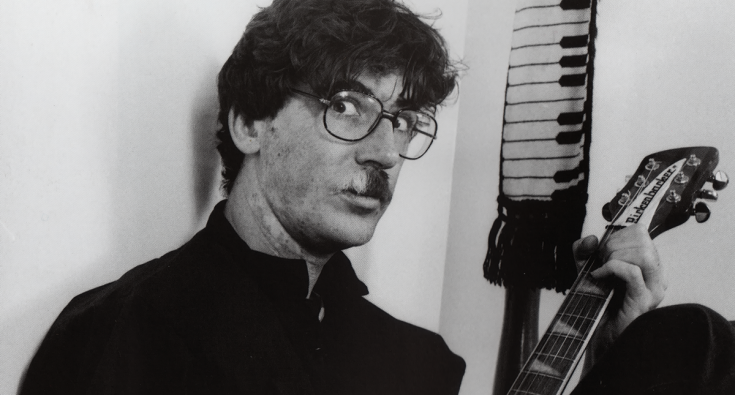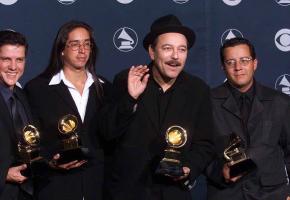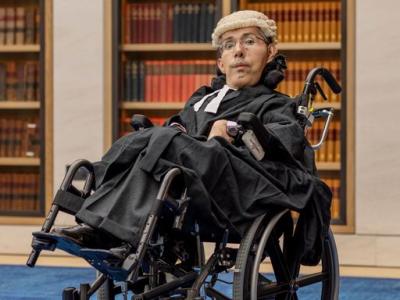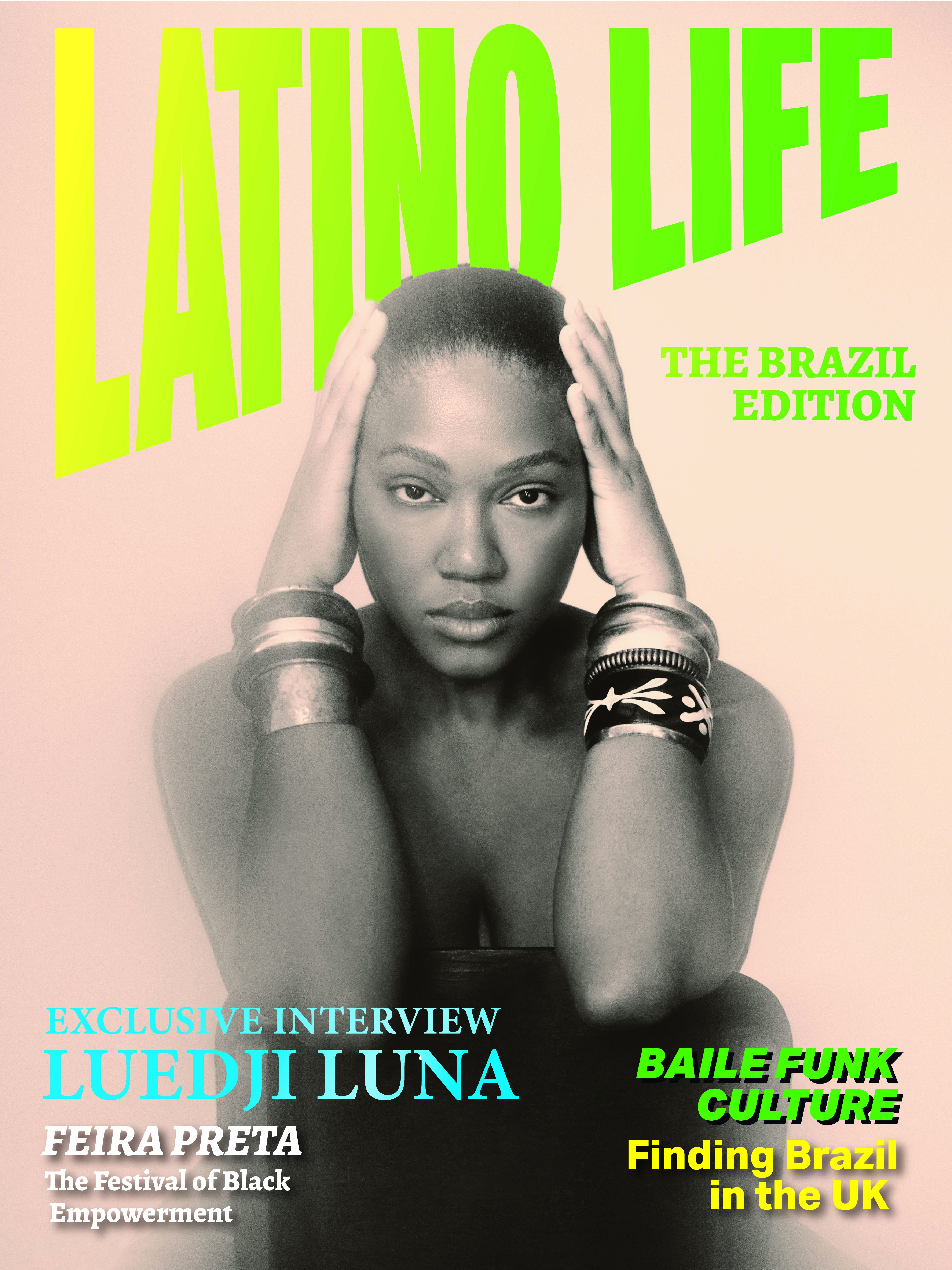Born in Buenos Aires in 1951, son of a teacher and a radio producer, Charly was exposed to a wealth of music, and started developing an ear for melody and arrangements at a young age. At five he began studying classical music (Bach, Mozart or Chopin), and at 12 he qualified as a teacher of music theory and by adolescence formed his first band Sui Generis with Nito Mestre, releasing their first two albums, Vida and Confesiones de Invierno.
They split in 1975 after playing to 20,000 people at Luna Park Stadium. The same year, García formed the symphonic rock band La Máquina de Hacer and cut two albums, a self-titled debut issued in 1976 and Películas a year later.
With the military coup in 1976, rock bands with any critical attitude toward junta, began to be persecuted; censored at best and jailed, tortured and killed at worst. In 1977, García went to live in Brazil, but returned to Buenos Aires to form a band with fellow Argentine guitarist and songwriter David Lebón, bassist/keyboardist Pedro Aznar, and his old partner from La Máquina de Hacer Pájaros, drummer Oscar Moro.
As Serú Girán, they recorded their self-titled debut. Between 1978 and 1982, signed to Columbia, they issued a plethora of singles handful of albums, including Bicicleta and Peperina, Their relationship with the Argentine press was at first contentious and bitter, once being dubbed “the worst band in Argentina”. It was a new sound, that critiques had to get used to, a process helped b a more open-minded public, and the fact that their sharp critique of Argentine’s government and portraits of everyday life in Argentina resonated with fans.
In 1983, Garcia produced Los Twist's debut album La Dicha en Movimiento, and recorded his own follow-up solo work, Clics Modernos, at the Electric Ladyland studios in New York. Clics Modernos had a pop/rock-oriented structure and was simpler than his previous works. The album sold extremely well and he began his longtime collaboration with producer Joe Blaney.
At the end of that year Charly, most certainly under the influence of drugs, pulled down his trousers in front of a live audience – the first of a string of controversies that his fans would have to forgive him for over time. But the quality of the compositions, and musicianship, particularly the fluid and melodic bass playing of musical prodigy Pedro Aznar provided the propelling force of what was an eclectic and daring sound, with often sweet and compelling melodies, steeped in the complex craft of tango.
Serú Girán released four albums and finally disbanded after Aznar left Argentina to pursue a music education in the United States. The Serú Girán farewell concerts were compiled and released as an album, and proved to be huge commercial successes.
Free to be whatever he wanted, Charly decided to release his own music as a solo artist. With a more pop feel and lyrics as politically-minded as ever, his first three solo releases, Pubis Angelical, Terapia Intensiva and Piano Bar, were a loosely woven trilogy, the latter recorded by one of his best touring bands, with Fito Paéz on keyboards.
The mid-to-late eighties was a successful and prolific period for Charly, releasing a collaboration with his old Serú Girán collaborator Pedro Aznar (Tango), as well as the massive hit Parte de la Religión. and Rezo Por Vos with Luis Aberto Spinetta.
Though his career was booming, Charly plunged deep into drugs and alcohol. In the early 1990s, Charly recorded an album tiled Filosofía Barata y Zapatos de Goma, which included guest spots from collaborators he’d had over the years. This included Andrés Calamaro and Fabiana Cantilo, Nito Mestre (from Sui Generis), Pedro Aznar (from Serú Girán) and others. The album includes Charly’s rock version of the Argentine national anthem.
In October of 1988, an Amnesty International Tour ended in Buenos Aires. More than 80,000 people attended the concert headlined by Peter Gabriel, Sting, Bruce Springsteen, Tracy Chapman, and Youssou N'Dour. IN an emotionally charged event, with the Madres de Paza de Mayo gracing the stage, León Gieco and Charly García represented Argentina, with Charly coining the spanish words 'derechos humans para siempre ya!' to replace Bob Marley's 'Stand Up for your rights' - a key moment in Argentina's public reconciliation with its history of terror.
In 1991, Charly reunited with Pedro Aznar and recorded Tango 4. Perhaps inspired by his old bandmate, he soon announced a Serú Girán reunion, releasing a brand new collection of songs collectively titled Serú 92.
The mid-90s saw Charly enjoying his newfound status as an elder stateman of Argentine rock, releasing the album La Hija de La Lágrima, and a fantastic MTV Unplugged session, which was a massive success commercially, and brought him a new international audience. Shortly afterwards, Charly released Say No More.
Going into his 50s, Charly looked considerably older and haggard, and his sub-par performance on the follow-up album Rock and Roll Yo began people wondering whether the years of drugs addiction were finally going to finish him off, with one overdose too far. With Charly you were always expecting to wake up to the news of his death.
But, lo and behold, when peers such as Luis Alberto Spinetta and Gustavo Cerati falling like flies, Charly seemed miraculously to be still standing. In 2011, Charly returned with a brand new song Kill Gill along with a live DVD. The following year, Garcia edited and produced the live 60x60 box set compiled from to commemorate his own 60th birthday.
In 2017, Charly finally released his most recent album Random, which lit up the Argentine charts, though his voice is weathered, his words as just as vital and sharp as they had ever been. The album received rave reviews, achieved gold status in Argentina and scored a Top Three single with "La Máquina de Ser Feliz."
Charly has built, destroyed, and rebuilt his career time and again over five decades, and his wide catalogue is littered with a wealth of incredible tunes that have become among Latin America’s most loved anthems. He is the musical expression of modern Argentine history, and the father of a genre, with its own unique identity, that the next generation of Argentine music creators has yet to live up to.


















